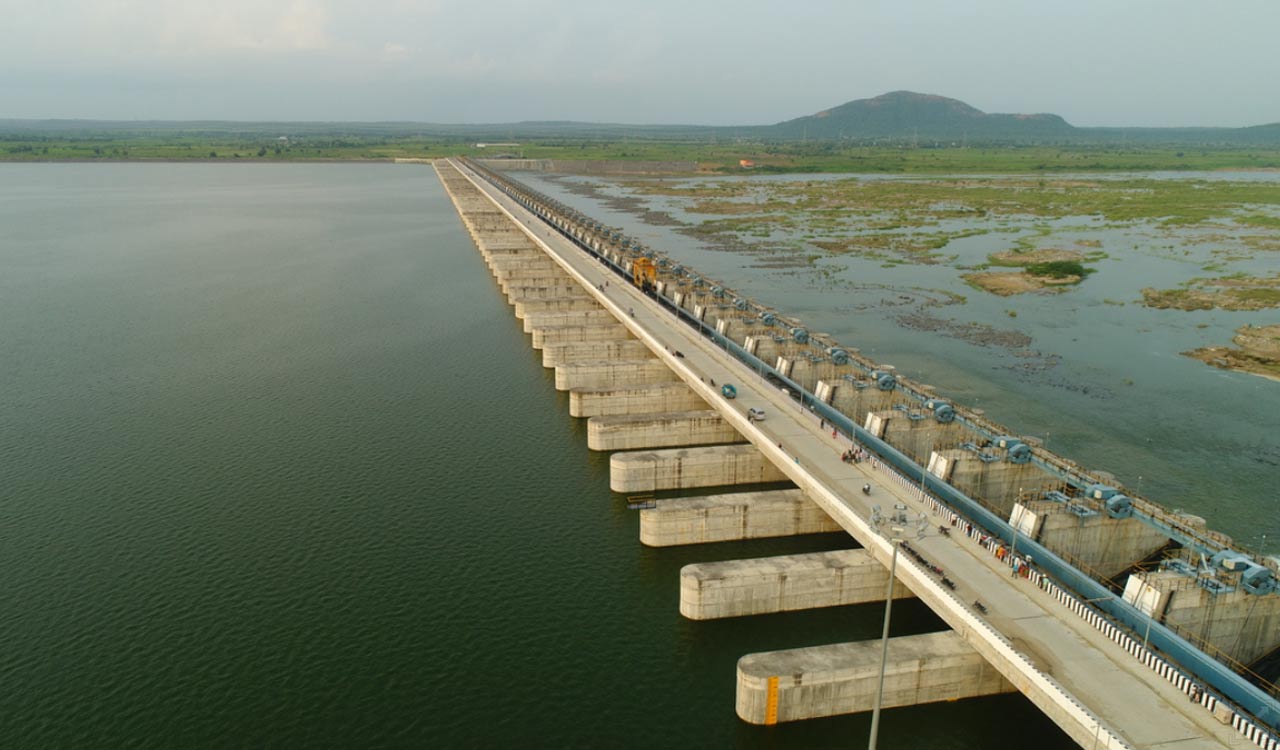The six-member committee did not complete even 10 percent of its job to arrive at any conclusion on the factors that led the piers to sink.
Published Date – 09:19 PM, Sat – 4 November 23

Hyderabad: The National Dam Safety Authority (NDSA), which attributed the sagging of piers on the Medigadda barrage of the Kaleshwaram Lift Irrigation Scheme (KLIS) to multiple reasons, is yet to perform a thorough field investigation to find out the root cause, which is mandatory.
The six-member committee did not complete even 10 percent of its job to arrive at any conclusion on the factors that led the piers to sink. Irrigation experts felt that the entire report, which was made public with unprecedented haste, was drafted based on the theory of probability and had nothing specific to fix the responsibility or to put the blame on the State.
The report was intended to target the State authorities for taking the initiative to make the massive project possible for quenching the big thirst of the region that was left unaddressed for decades and the implementation agencies that carried out the construction in a record time, they felt.
The NDSA panel which reached Medigadda on October 22, had carried out only a barrage visit, the preliminary exercise that precedes the investigation into structural soundness and other issues of the dam, if any. The barrage was almost full the day the team was hurriedly despatched to the State by the Jal Shakti Ministry.

As desired by the team, the barrage was emptied to facilitate an end-to-end examination by the designated authority. The team was expected to revisit the project for a thorough investigation of the piers that surfaced fully after the water in storage was let off as a precautionary measure. Such a full-fledged exercise would have thrown more light on the cause of the issue, but that investigation did not happen.
Experts pointed out that the investigation report of an apex body like the NDSA is expected to be accurate. The details furnished by the Irrigation authorities of the State in response to the queries of the NDSA team were not reflected in the report in any manner. The NDSA team wanted information on as many as 20 aspects related to dam safety. The State Irrigation department responded promptly by providing information gathered from the project implementation agency on 11 issues immediately. The second report from the State furnishing details on six more aspects of the dam construction and design were submitted on November 1. However, the NDSA released its report immediately, taking into consideration only 11 of the 20 issues pertaining to which it had sought information from the State. In a way, the panel did not give any credence to the version of the Project authorities. “It is an omission of grave nature,” irrigation experts here said.
Even more perplexing was how report however surfaced within media and political circles well before it was delivered to the Engineer- in-Chief (Irrigation). The NDSA, which was expected to extend technical support to Irrigation authorities for rehabilitation of the impacted stretches of the project, instead preferred to play up the dam safety issue by handing over the half-baked report to its political bosses first, experts said.



